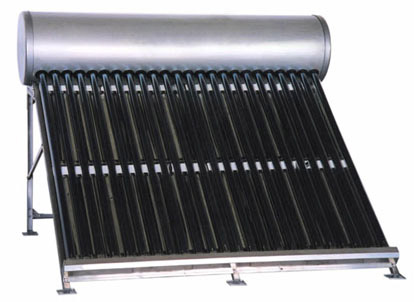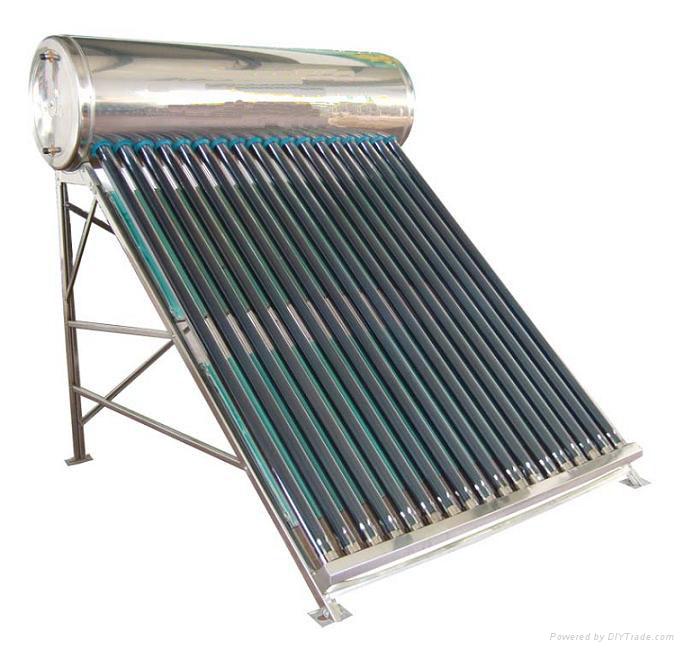Saturday, December 6, 2008
Thursday, December 4, 2008
Photovoltaic (PV) Cells
Photovoltaic (PV) cells are made of special materials called semiconductors such as silicon, which is currently the most commonly used. Basically, when light strikes the cell, a certain portion of it is absorbed within the semiconductor material. This means that the energy of the absorbed light is transferred to the semiconductor. The energy knocks electrons loose, allowing them to flow freely. PV cells also all have one or more electric fields that act to force electrons freed by light absorption to flow in a certain direction. This flow of electrons is a current, and by placing metal contacts on the top and bottom of the PV cell, we can draw that current off to use externally. For example, the current can power a calculator. This current, together with the cell's voltage (which is a result of its built-in electric field or fields), defines the power (or wattage) that the solar cell can produce.
The other many method of using solar energy is called solar thermal. Rather than converting sunlight to electricity, the heat from sunlight is used. This heat can be used in a variety of ways. For instance, it is possible to use it to heat the water in your home or for a swimming pool instead of a hot water heater (this is typically done by running water through black pipes which get hot in the sun). It is possible to use it to heat your home, instead of a heater in fact (this also usually done by heating water and circulating the hot water through radiators in your house).
You can also use the sun's heat to generate electricity, and if fact, most electricity produced directly from the sun's energy is produced by this method (and not by PV, as described above, although PV is more commonly thought of as "solar energy"). Solar thermal electricity is generated by heating a special material (a type of high temperature oil) to very high temperatures using focused sunlight (the light is typically focused using parabolic mirrors that focus the sunlight onto a tube of this special material, heating it to several thousand degrees). This very hot liquid is then moved to a generating station, where the heat is used to turn a turbine, and that makes electricity.See the Related Questions links to the left of this answer for more information about the uses of solar energy
Bio Gas
Biogas plants operate using anaerobic digestion, a process where bacteria consume organic material in the absence of oxygen, producing methane and carbon dioxide gas. The biogas can be collected and used for cooking, lighting or generating electricity. There are a range of biogas plant designs, each of which has different advantages in terms of cost, ease of construction and durability. The feedstock for the plant is often cow or pig dung, but sewage and food wastes are also widely used.
The first biogas plants were used 150 years ago, and the more modern designs have been available for 50 years. Several million plants are installed worldwide, with particular concentrations in
The main benefit of the biogas plant is that it replaces other fuels for cooking - in rural areas this is usually firewood, and in urban areas LPG or kerosene. When firewood is replaced the health of women is improved as they no longer have to breath in wood smoke, and as it takes much less time to feed a biogas plant than it does to collect firewood there are considerable time-savings. Other benefits of biogas plants include the ability to connect a latrine, so improving sanitation, and the effluent produced, which is a good-quality fertiliser.
The countries where biogas plants have been successful on a large scale have had some level of government support, but as fossil fuel prices have been rising and carbon offsetting has become more popular the economic viability of biogas plants has been improving.
Technology background
Biogas plants use bacteria to turn wet organic matter into methane and carbon dioxide. A biogas plant consists of a container to store a large volume of slurry (finely divided solid organic waste in water) and a means to collect the gas and exclude air. Air must be excluded because the methane-producing bacteria are anaerobic, i.e. they do not work when oxygen is present. The most common source of these bacteria is a cow’s gut, so cattle dung is a favoured feedstock; a small amount is often used to start the digestion process if the main feedstock will be other types of organic matter. The bacteria work best at 35°C, so in colder climates the container must be insulated or heated to maintain this temperature.
The cheapest biogas plant designs are made mainly of masonry, either brick or concrete. The key to strength and gas containment is using curved shapes – cylinders and domes – and making sure that the plant is impermeable to gas. Steel and plastic (high-density-polythene, HDPE, and glass-reinforced-plastic, GRP) are used in some designs, which can be pre-fabricated and thus installed very quickly, but cost more.
Another design that has proved popular in
Sewage plants use anaerobic digestion to reduce the volume of solid wastes and reduce the smell. In recent years, many
History
Biogas was originally developed in
Community biogas schemes, in which people provide dung or their own food waste to a central plant and share the gas, have seldom been successful. People seem to be unwilling to share the work and benefits equitably. However, the development of systems that use food waste as the main feedstock and supply gas to fuel an engine to generate electricity have potential, especially if the scheme can be financed through the avoided cost of waste disposal.
The number of domestic biogas plants in the world is very difficult to estimate. In the early 1980s,
Benefits
The main benefit of a biogas system is that other fuels for cooking are replaced. In rural areas, biogas usually replaces firewood, which is often in short supply, and can save people up to four hours per day as they no longer have to collect wood and light a fire. Collecting dung and feeding it to the plant takes less than half an hour and does not need to be done early in the morning, so there is time to give children a meal before school. Biogas burns with a very clean flame, so women do not have to breathe wood smoke, which is a major cause of respiratory and eye disease. In urban areas, biogas replaces fossil fuels such as LPG or kerosene.
Use in developing countries
The large-scale biogas programmes in South Asia and China supply plants to individual farmers, who feed them daily with a mixture of water and dung from their own animals (two to four cows or five to ten pigs) and use the gas produced for cooking. Many plants, especially those in
Food wastes and sewage can also be used to generate biogas. If a family or community building (school or hostel) rely on their own wastes, they can save between 25% and 50% of the LPG they use for cooking. If the users can supplement the feed with other materials, such as leftovers from a food processing enterprise, they can completely replace LPG. Food waste produces gas more quickly than dung, so these plants are smaller (typically 1 cubic metre in volume), and thus suitable for urban homes. The typical cost of such plants is £120 in
The economic viability of biogas technology depends on the cost of the fuel being replaced, and whether there are other economic benefits (for instance, avoided waste disposal costs). Government schemes enabled the programmes in
Use in developed countries
In the
There is a large programme in




